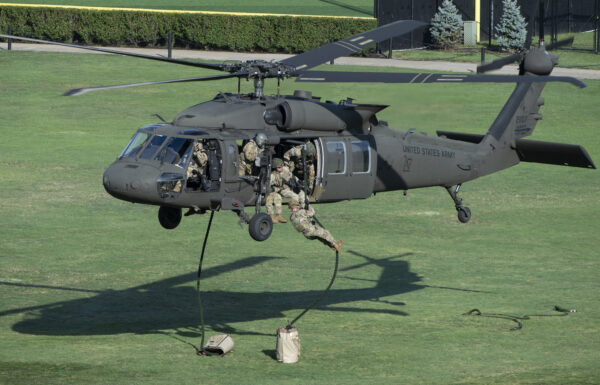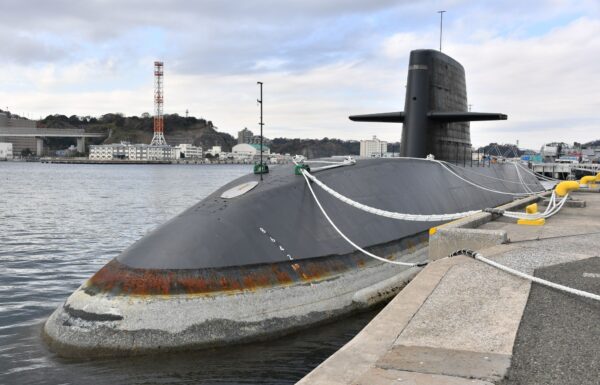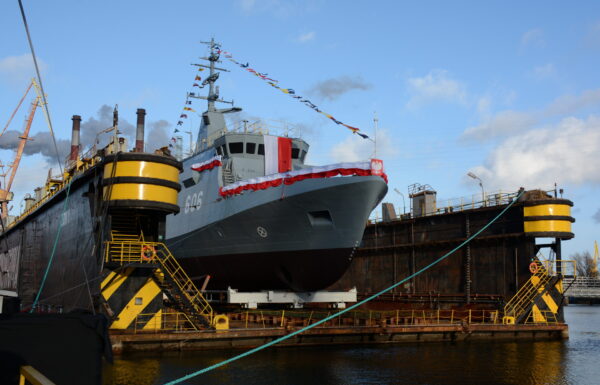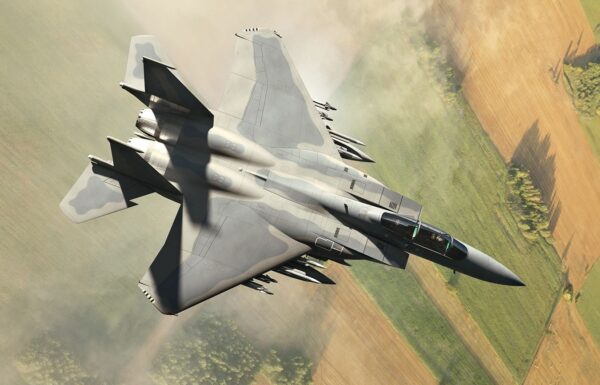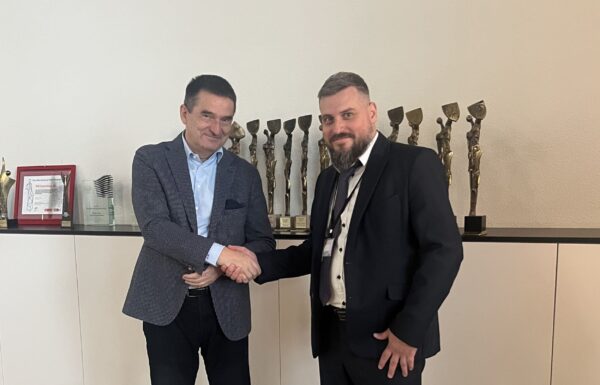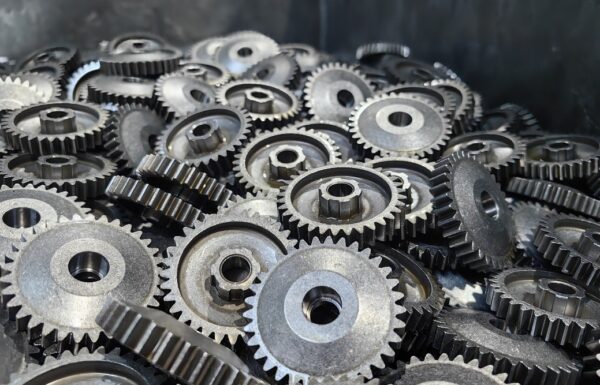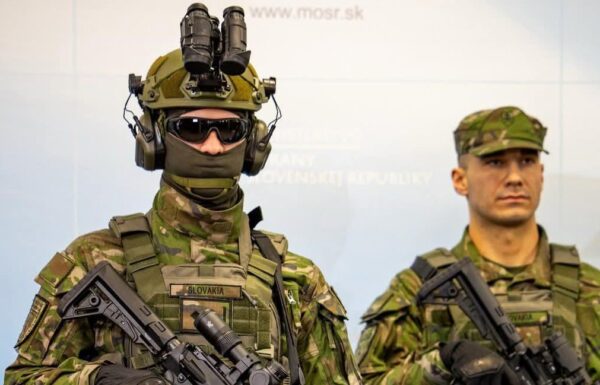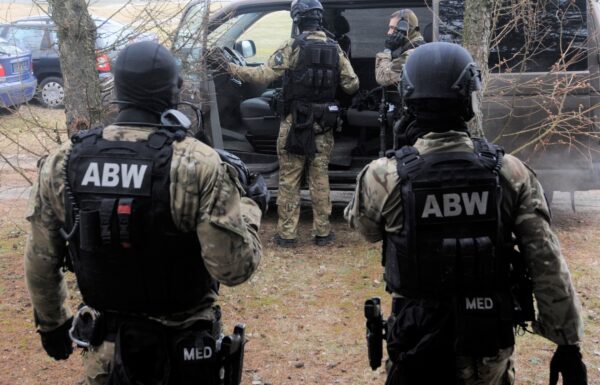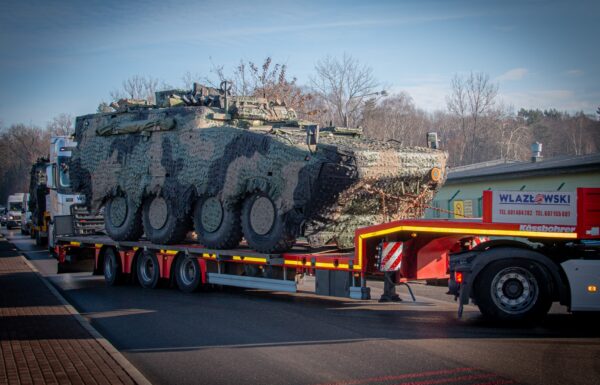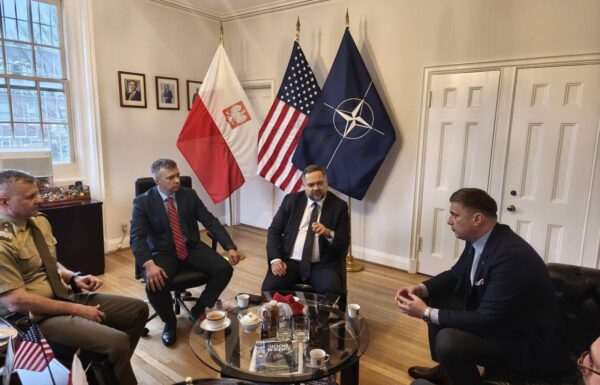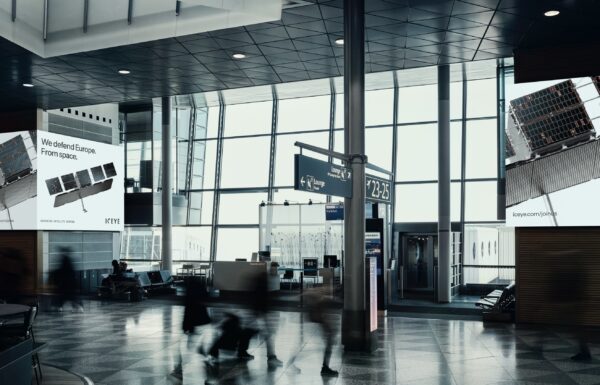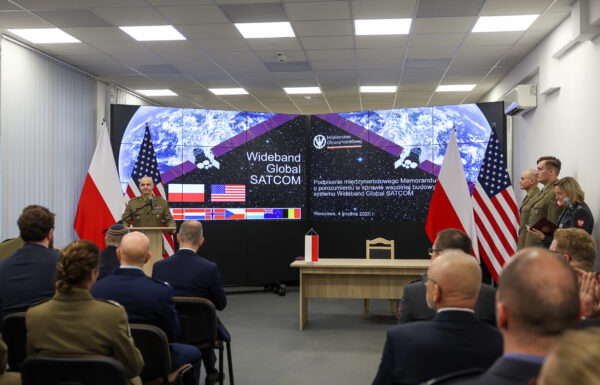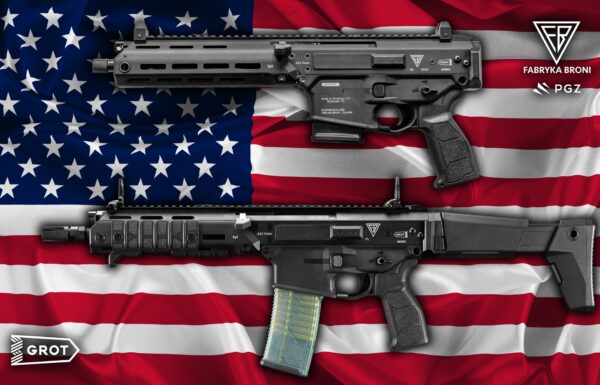The history of the E-7A Wedgetail aircraft began in Australia. In the mid-1980s, the local Department of Defense initiated study work on an early warning and air control aircraft. Among the options available on the market at the time, the E-3 Sentry and E-2 Hawkeye were predominant. Finally, a decade later, the Australian authorities made a decision on the matter. In 1996, inquiries were made to manufacturers about the possibility of acquiring such an aircraft. After conducting a competition, Boeing was selected in 1999 to execute the project. The choice was the 737 AEW&C equipped with the then-revolutionary Multi-role Electronically Scanned Array (MESA) radar, which featured electronic scanning and did not require the use of a rotating radar antenna disc on the fuselage’s spine.
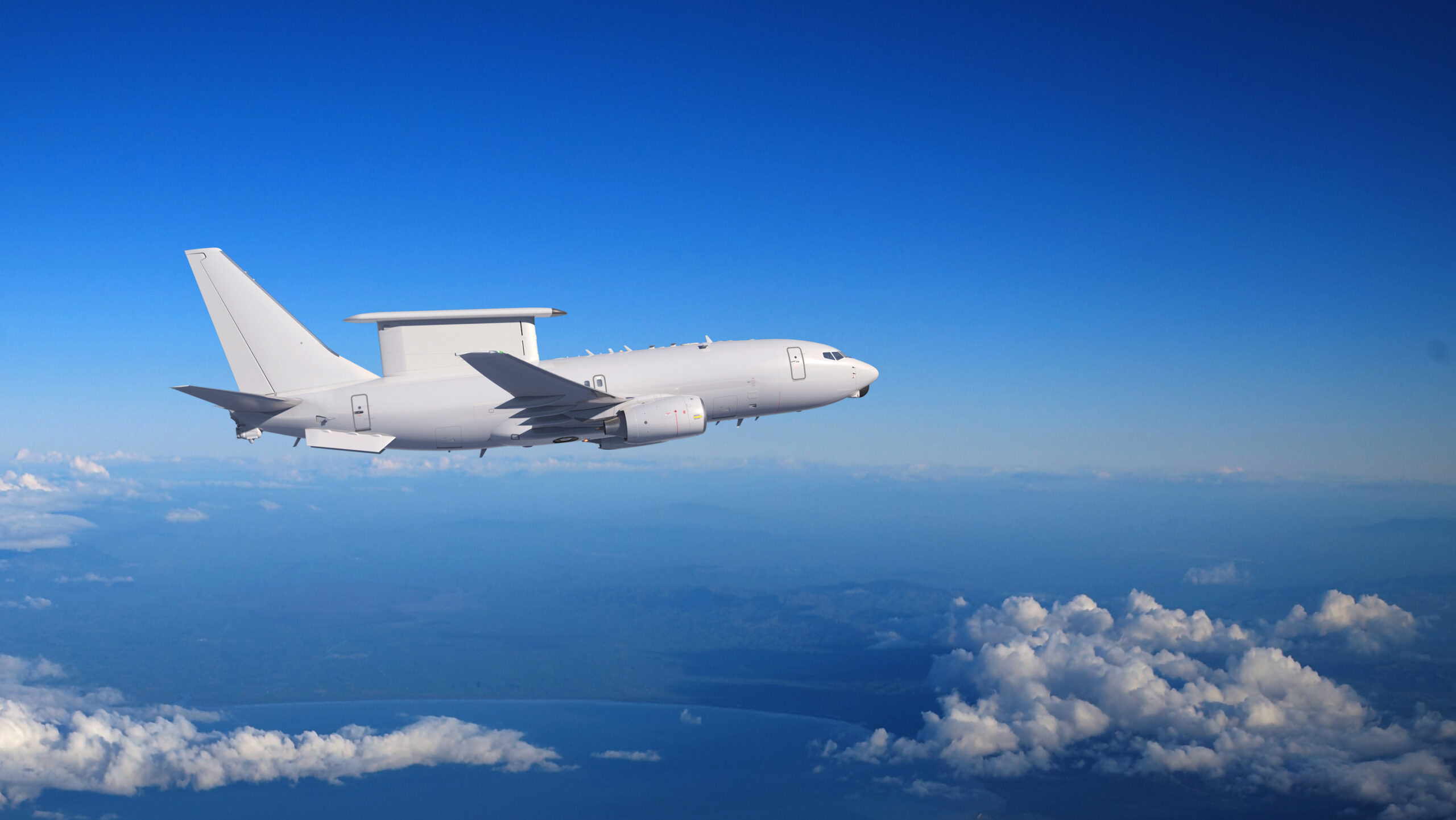
Prototype of the E-7A Wedgetail early warning aircraft during flight tests / Photo: Boeing
Today, a reminder of the aircraft’s Australian origin is its name, Wedgetail, derived from an endemic eagle species and the name of the program conducted by the RAAF (Royal Australian Air Force), which ultimately led to the development of the aircraft.
Uniwersal platform
As the platform for the new early warning aircraft, Boeing chose the latest generation at the time (the NG – New Generation series) of the passenger model 737-700, which was part of the newly introduced family of the popular design. The use of a new electronically scanned radar and modern operator stations meant that smaller components could be accommodated on board. This, in turn, allowed the entire construction of the E-3’s successor to be based on the smaller, younger 737 platform. For the prototype aircraft, it was decided to build the plane from scratch and equip it with the necessary installations. According to the Australian order, the first two aircraft were to be built entirely in the USA, and further ones were to be integrated with the radar in Australia by Boeing Australia. Later, Boeing repeated this procedure multiple times, transferring the modification of several aircraft to an industrial partner from the purchasing country.
 E-7A flying Royal Australian Air Force colors / Photo: U.S. Air Force / Tech. Sgt. Michael R. Holzworth
E-7A flying Royal Australian Air Force colors / Photo: U.S. Air Force / Tech. Sgt. Michael R. Holzworth
E-7A aircraft can be built based on newly produced 737NG fuselages, as well as by retrofitting existing aircraft purchased from the civilian market. There is a wide selection to choose from, as more than 5000 units of the new generation 737 have been produced, and over 9000 of all 737 models.
Another advantage is the cost savings in operation when the user of the Wedgetail already operates other aircraft based on the 737 family. The Polish Air Force already uses BBJ2 and 737-800 aircraft based on the 737NG design for transporting the most important persons in the state. According to Boeing, there are 30 centers worldwide that deal with 737 model overhauls and 250 centers that handle the technical service of these aircraft, so access to technical service is straightforward. Additionally, there is a global network for the distribution of spare parts and operational support from the manufacturer. Interestingly, the second largest Boeing distribution center in Europe is located in Rzeszów, Poland.
Not only the radar
The primary tool of the Wedgetail is its radar, which at the time of its creation was one of the groundbreaking designs, opening a new chapter in the development of radiolocation. The MESA radar, with electronic scanning, developed by Northrop Grumman, operates in the L band (1-2 GHz). It can be used for the detection, identification, and tracking of both aerial and maritime targets. The radar has a range of over 600 km for over-the-horizon targets. When searching for aerial targets against the background of the earth, it can detect aircraft the size of a typical fighter jet from a distance of 370 km. For maritime targets, the detection range is over 240 km. The radar can track a total of 180 targets and simultaneously support the interception of 24 targets.
 The cabin with 10 radar operator stations in the E-7A aircraft…/ Photo: Boeing
The cabin with 10 radar operator stations in the E-7A aircraft…/ Photo: Boeing
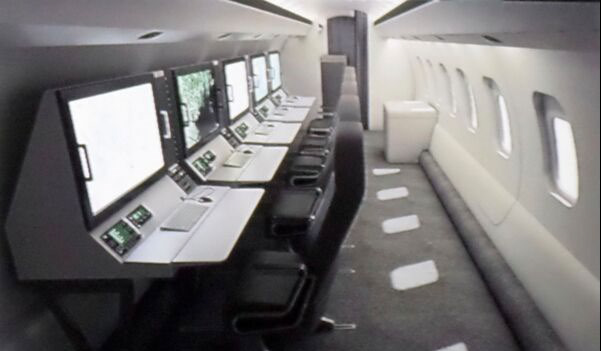 …and for comparison, the interior of a business jet with five stations / Photo: Boeing
…and for comparison, the interior of a business jet with five stations / Photo: Boeing
The radar antenna also has the capability to perform electronic intelligence (ELINT) tasks and can detect radio emissions from a distance of over 850 km if the aircraft is at an altitude of 9000 m. The onboard systems of the Wedgetail can determine the location and type of emission sources, enabling the aircraft to identify targets and assess the level of threat they pose.
The radar uses an antenna array measuring 10.8 x 3.4 meters located in a horizontal flat radome on top of a vertical pylon, which houses a second side-emission antenna measuring 7.3 x 2.7 meters. The side-emission antenna covers a 120º sector on both the left and right sides of the aircraft, while the antenna in the flat radome on the pylon covers 60º sectors in front of and behind the antenna array. Together, this provides a full, integrated 360º coverage.
Electronic scanning allows for more frequent scanning of the airspace with the radar beam compared to traditional radars like the AN/APY-1 and AN/APY-2 used in E-3 Sentry aircraft, which were mounted in a hydraulically driven rotating disk. The radar not only detects very distant objects but also selectively scans chosen sectors of the airspace with increased frequency.
The radar antenna works in conjunction with an Identification Friend or Foe (IFF) interrogator using the Mod 5 system. This system enhances the safety of friendly combat aircraft by utilizing a new waveform and cryptography, as well as solutions that improve the interoperability between the MESA radar and the interrogator.
The aircraft is also equipped with advanced communication systems that meet the requirements for voice communication and data transmission, taking into account various levels of confidentiality.
Operating the onboard systems is simplified because the operator can manage different types of missions from the same station. Due to the algorithms introduced into the software, some of the operator’s tasks can be performed by the computer system. This reduces the workload on the controller, allowing for a decrease in the number of operators on board.
The Wedgetail cabin has 10 stations for air traffic controllers. Boeing cites this as an advantage over the competition, which, due to smaller aircraft, can accommodate only five such stations and provides operators with less space to rest during the flight.
The aircraft is equipped with sensors for a radar warning system, as well as countermeasure mechanisms. These are located on the wingtips, the nose section, and the tail of the aircraft.
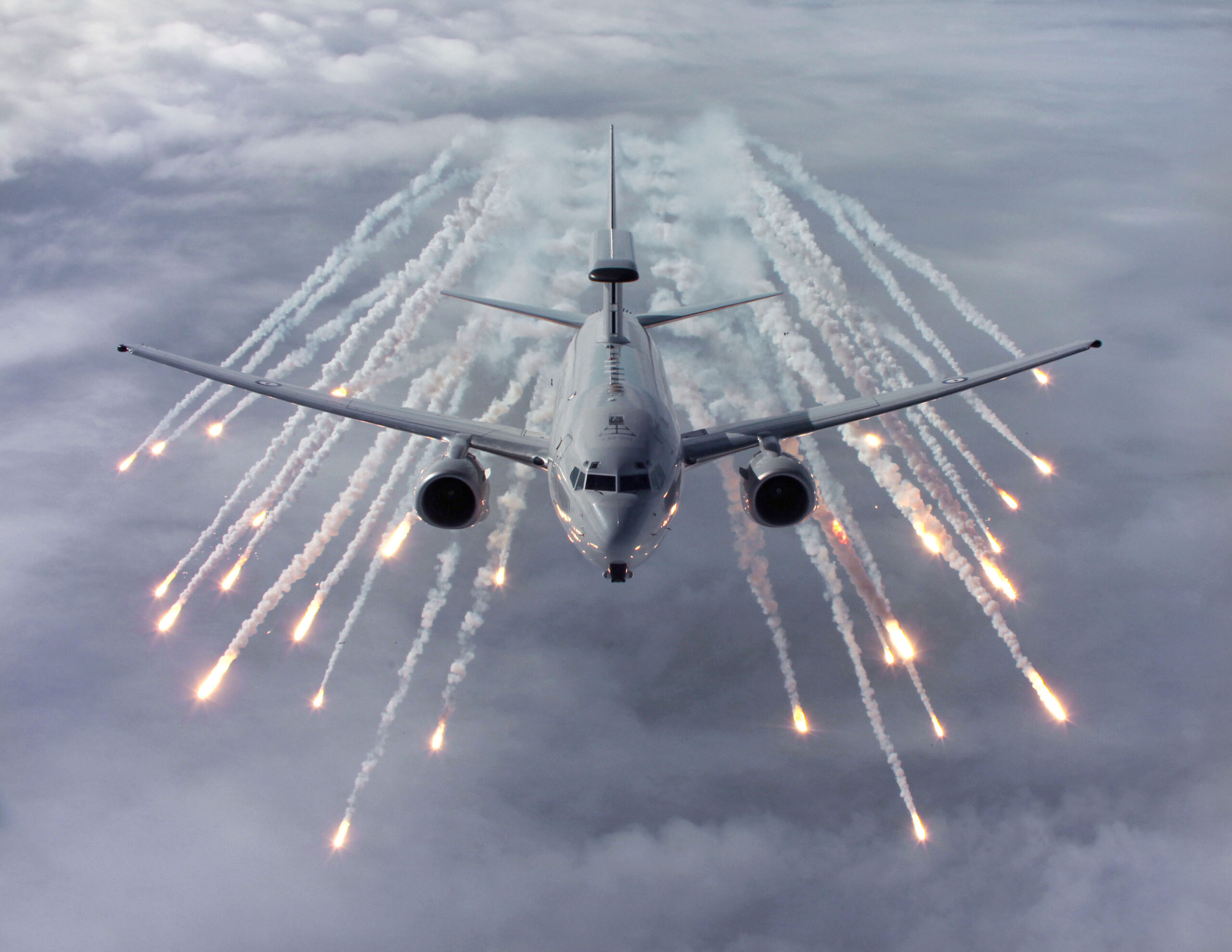 Australian E-7A Wedgetail during test firing of flares / Photo: Boeing
Australian E-7A Wedgetail during test firing of flares / Photo: Boeing
The Wedgetail is also equipped with a connection for in-flight refueling using a rigid fuel probe, according to the United States Air Force (USAF) standard. Another structural element that differentiates it from the standard 737NG are two additional stabilizing fins mounted on the lower part of the fuselage. Their purpose is to mitigate the adverse impact of the radar antenna’s vertical plate on the aircraft’s stability.
Australia
The Australians intended to purchase seven airborne early warning and control aircraft, but ultimately reduced the order to four, with an option to purchase three more E-7A Wedgetails. Technical support was to be provided by Boeing Australia and BAE Systems Australia.
The first two aircraft were delivered in November 2009. Australia also purchased the two of the optioned units. The sixth and final E-7 was delivered to the RAAF in 2012.
The Australian Wedgetails participated in combat operations against ISIS over Syria and Iraq in 2014, and one unit also took part in the search for the missing Malaysian Boeing 777-200ER (flight MH370) in the Indian Ocean.
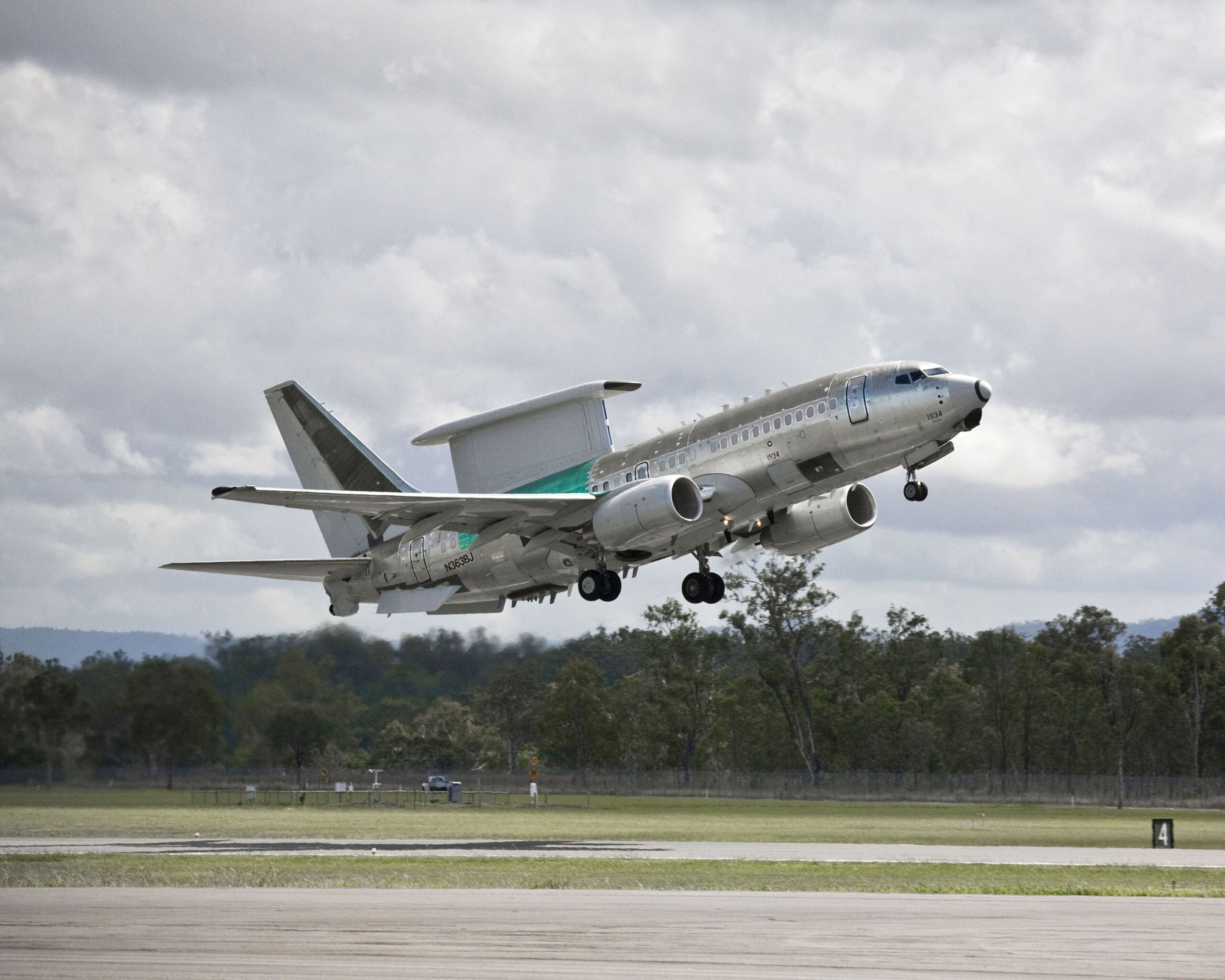 First flight of the Wedgetail modified in Australia / Photo: Boeing
First flight of the Wedgetail modified in Australia / Photo: Boeing
In the summer of 2023, Australian authorities decided to deploy one aircraft to Germany to secure the supply of equipment for Ukraine in the conflict with Russia. The aircraft arrived in Europe in October 2023 as part of Operation Kudu and was withdrawn in April this year (Australia withdraws E-7A Wedgetail from Europe).
Turkey
After Greece ordered Embraer EMB145 AEW&C Erieye reconnaissance aircraft, Turkey decided in 2000 to acquire similar machines to balance the new capabilities gained by the Greek Air Force. In 2002, a contract was signed to purchase four Boeing 737 AEW&C aircraft with an option for two more. The first aircraft was to be produced at Boeing’s facilities in the USA, while the remaining three were to be delivered by Turkish Aerospace Industries (TAI). The order received approval from US authorities the following year, and work began on modifying the first aircraft for Turkey in 2006. It was test flown in Seattle in 2007, and the first one modified in Turkey was completed in the summer of 2008.
 The first E-7T Peace Eagle aircraft intended for the Turkish Air Force / Photo: Boeing
The first E-7T Peace Eagle aircraft intended for the Turkish Air Force / Photo: Boeing
Deliveries, originally planned for 2010, were delayed due to an embargo imposed by Israel. Ultimately, the first E-7T Peace Eagle aircraft— the name given to the Turkish planes—began arriving for the Turkish Air Force in 2014. The last ordered unit was delivered at the end of 2015.
South Korea
The next buyer of E-7A Wedgetail aircraft was the Republic of Korea. In 2006, the then-government signed an order for four units. The first was delivered in 2011, while the remaining three were modified by Korean Aerospace Industries and delivered at three-month intervals. According to media reports from late 2023, the Republic of Korea is interested in acquiring an additional four E-7A aircraft. These aircraft are known by the name Peace Eye.
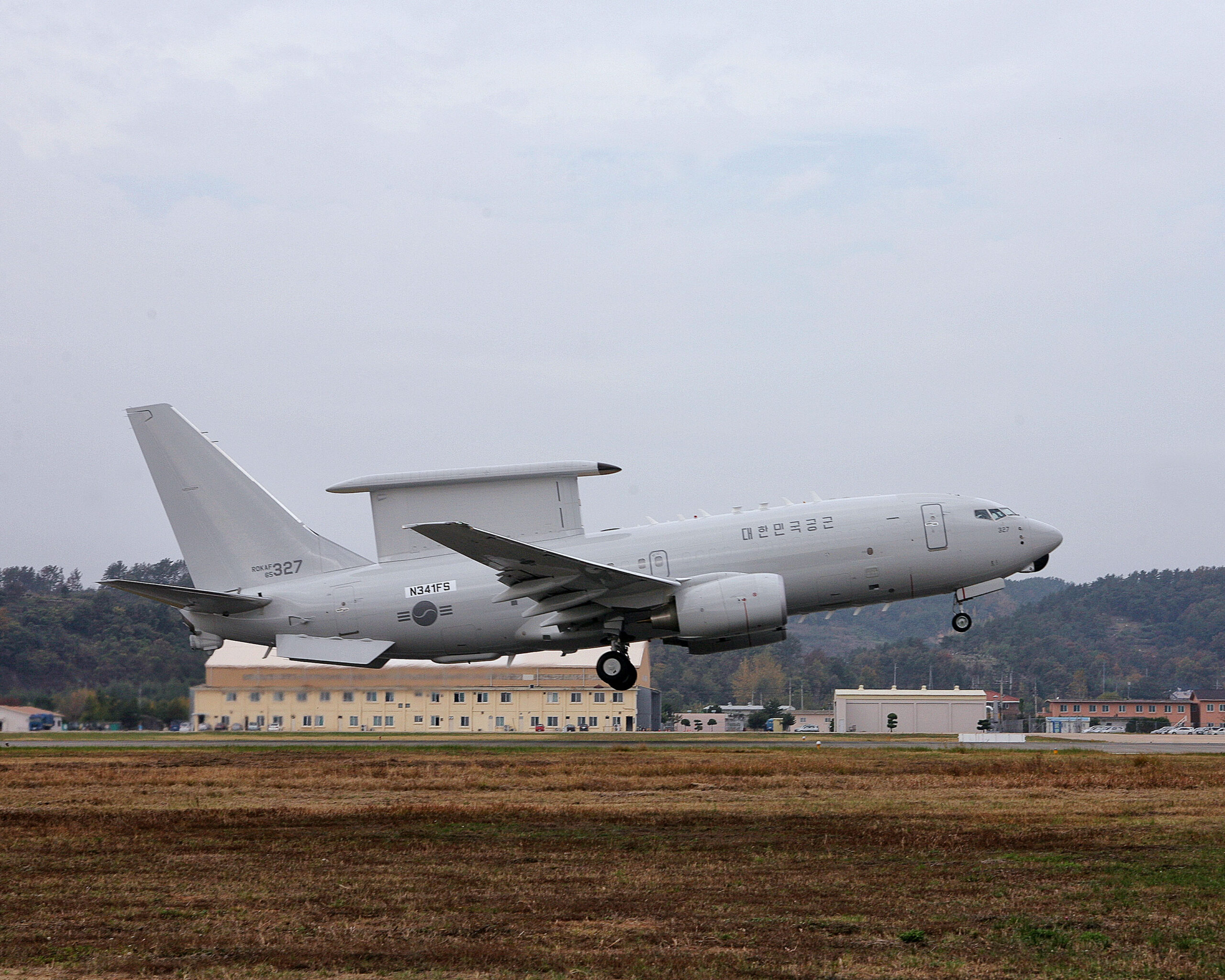 E-7 Peace Eye in the colors of the Republic of Korea Air Force / Photo: Boeing
E-7 Peace Eye in the colors of the Republic of Korea Air Force / Photo: Boeing
United Kingdom
In 2018, the UK government announced that it had entered into talks with Boeing and the RAAF about potentially acquiring E-7A aircraft to replace the aging British E-3D Sentry.
In 2019, the UK Ministry of Defence announced the purchase of five E-7A aircraft. In the Royal Air Force, they were designated Wedgetail AEW1. Two of the aircraft were to be converted from passenger versions, while the remaining three were to be built from scratch.
In 2021, the number of ordered aircraft was reduced from five to three. The conversion is being carried out by STS Aviation Services in Birmingham. Initially, the first aircraft was scheduled to enter service in 2024, but there are reports of a possible delay in delivery to the following year.
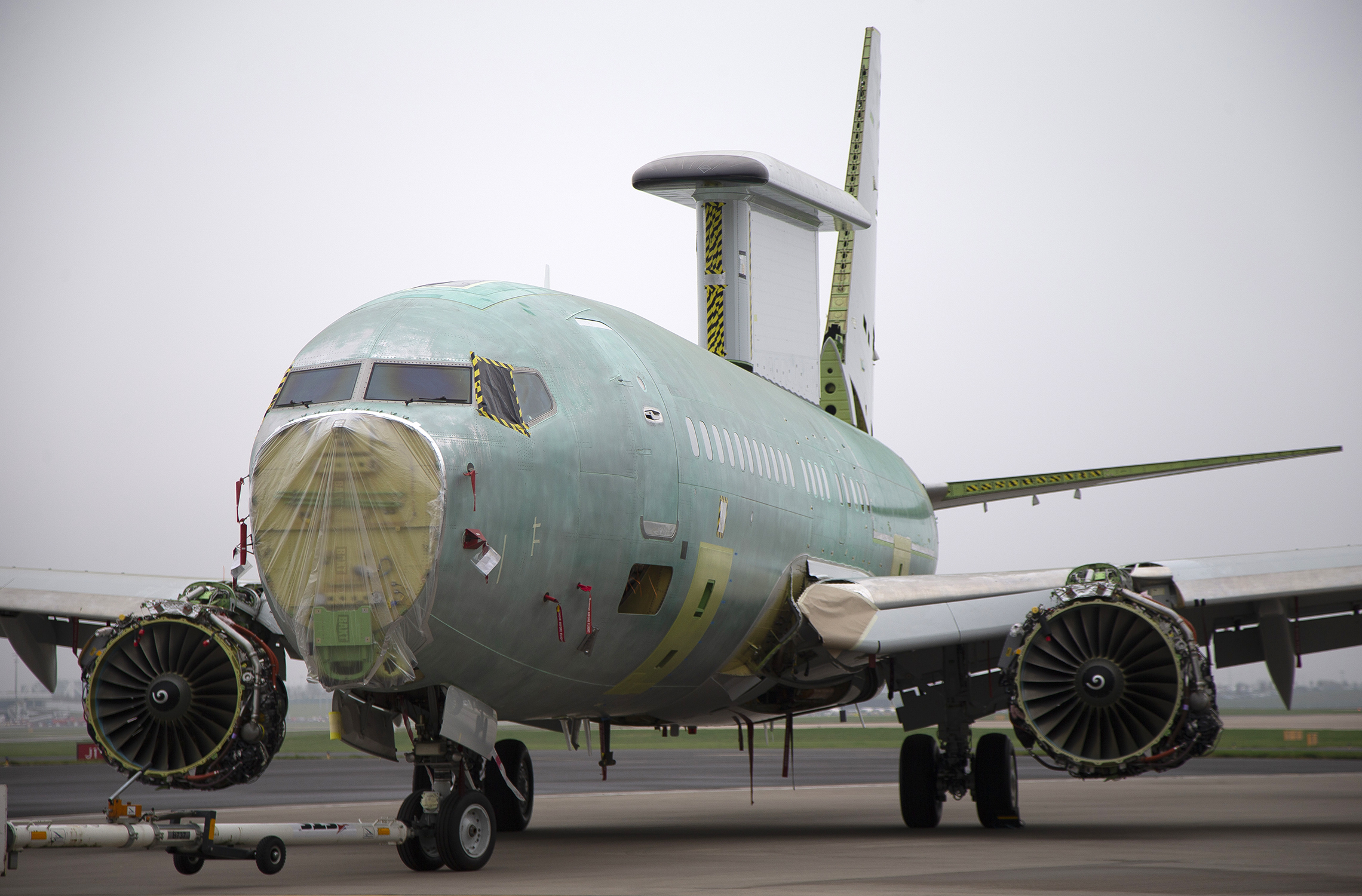
Wedgetail being converted at the STS Aviation Services facility in Birmingham for the Royal Air Force / Photo: Royal Air Force
In the summer of 2023, the UK Defence Committee questioned the decision to reduce the planned purchase of E-7A aircraft from five to three. According to the published report, the purchase of three aircraft is set to cost $2.5 billion, while the purchase of five aircraft was estimated to cost $2.7 billion.
However, the main source of concern was the fact that despite the reduction in the number of aircraft purchased, the number of MESA radars supplied by Northrop Grumman still amounts to five units.
USA
In 2021, several high-ranking military officials in the USA publicly discussed the need to acquire successors for the E-3 Sentry aircraft. Boeing’s E-7 Wedgetail was identified as the optimal solution. At the end of that year, the US Air Force announced its intention to conduct trials of the E-7 to determine if it meets USAF requirements.
In the spring of 2022, it was announced that the Wedgetail meets the requirements of the US Department of Defense for command and control systems as well as for target detection.
In 2023, a contract was signed with Boeing for the construction of two prototype E-7 Wedgetail aircraft for the USAF. Plans include making a decision by 2025 to order a total of 26 aircraft of this type. The first aircraft is expected to enter service in 2027.

Visualization of the Wedgetail in US Air Force colors / Photo: Boeing
NATO
In 2022, NATO issued a request for proposals to acquire an airborne early warning and control aircraft to replace 14 E-3A AWACS aircraft. The new aircraft are expected to achieve initial operational readiness by 2031.
In November 2023, the NATO Support and Procurement Agency (NSPA) decided to purchase six E-7A Wedgetail AEW&C aircraft. The acquisition is part of the Alliance Future Surveillance and Control (AFSC) initiative, aimed at replacing the aging fleet of E-3 early warning aircraft, which are expected to be retired by 2035. The NATO E-7s are scheduled to begin service in 2031, as initially planned.
One of the arguments given to support the decision to choose the E-7 was the fact that such aircraft are already in operation in NATO countries like Turkey, or will be in operation soon in countries like the United Kingdom and the USA.
As reported by NATO representatives, six early warning aircraft are the minimum number required to meet operational needs.

Korean E-7A Peace Eye escorted by F-15K of the Republic of Korea Air Force / Photo: ROKAF
Poland?
At the beginning of 2023, Poland recognized an urgent need for its own radar stations mounted on aircraft. In the summer of the same year, a decision was made to purchase, among other things, two Saab 340B AEW-300 early warning aircraft, which were originally used by the United Arab Emirates. The key factor in our case is the delivery time. Concurrently with the decision to purchase AEW&C aircraft, a decision was also made to acquire aerostats with a similar purpose (Barbara program).
It is worth noting the short procurement process in this case. Additionally, the then-spokesperson for the Armament Agency emphasized the ad hoc nature of the aircraft purchase in Sweden and mentioned that this acquisition does not preclude the future purchase of more advanced airborne early warning and control aircraft.
This is where Boeing’s offer and the E-7 Wedgetail aircraft come into play. Since Poland has not initiated a selection process for an early warning aircraft, it is difficult to specify the technical requirements it will need to meet. However, it can be assumed that the E-7 will be among the considered designs. From a Polish perspective, a significant advantage is the use of the Boeing 737NG as the carrier for the MESA system. Three aircraft of this type are already in service with our Air Force as VIP transport planes. Choosing the E-7 would therefore help reduce maintenance and repair costs, as well as issues related to spare parts.
Another significant advantage is the full interoperability with other aircraft of this type already selected by NATO countries such as Turkey, the United Kingdom, and the USA, as well as by NATO itself.
 Australian E-7A escorted by USAF F-35 / Photo: U.S. Air National Guard / Staff Sgt. John Linzmeier
Australian E-7A escorted by USAF F-35 / Photo: U.S. Air National Guard / Staff Sgt. John Linzmeier
Moreover, the manufacturer ensures systematic upgrades of the aircraft. For example, since the first Wedgetail units entered service with the RAAF, improvements used in newer aircraft have been incorporated into its equipment.
Given Boeing’s practice of passing the task of modification of some aircraft to the local aerospace industry, it can be assumed that Poland could receive a similar offer.
Currently, there are no official efforts underway in Poland to acquire permanent airborne early warning and control aircraft. Acquiring Saab 340s with Erieye radar allows for postponing the decision somewhat, but considering the lead time for orders, if we want to replace the aircraft acquired from Sweden in the coming years, there is not much time left to make a decision.


